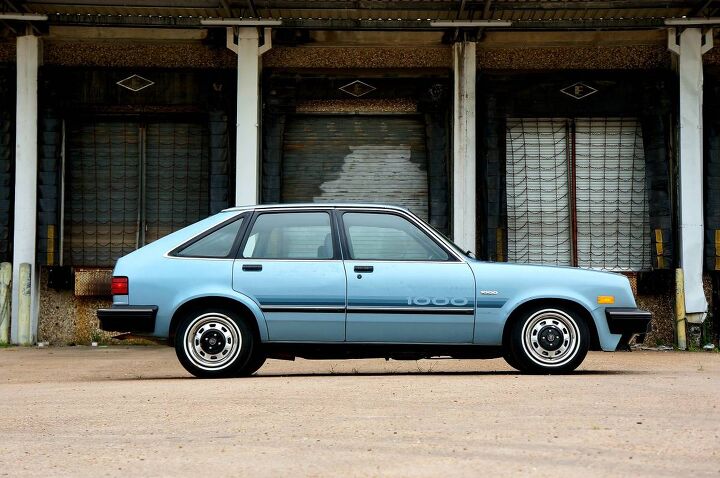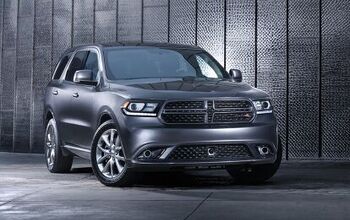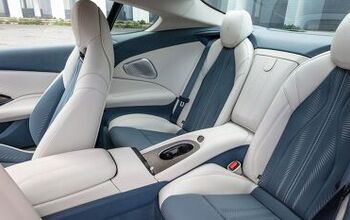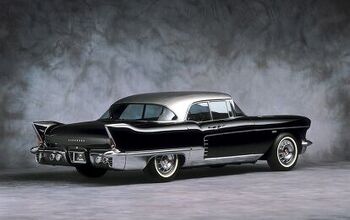Rare Rides: A 1986 Pontiac 1000 - Preserved Performance

The Rare Rides series has previously featured many Pontiacs, and today’s hatchback is our ninth to wear the Red Arrow badge. It’s also the smallest Pontiac we’ve ever featured.
It’s not a Chevette, but it is the Chevette’s sporty Driving Excitement cousin!
By the mid-Seventies, it was time for General Motors to shake up its smallest H-body entry-level cars, the subcompact Chevrolet Vega and Pontiac Astre. Vega first went on sale in 1971, with the Astre following for 1973. Both Vega and Astre continued through the 1977 model year, though their replacement in the T-body based Chevette bowed in 1976.
Worth a mention, GM had other subcompact offerings that utilized the rear-drive H-body. Four of them, to be exact: Chevrolet Monza, Pontiac Sunbird, Buick Skyhawk, and the Oldsmobile Starfire. But those four designs were newer than Vega or Astre, and lived on through the 1980 model year before their consolidation and replacement by front-drive J-body options.
The new T-body was a new type of platform for GM. Designed as a base for subcompact cars globally, the T was spread to many brands, and produced in seven different factories. Versions of the T-body were used abroad on the Isuzu Gemini, Daewoo Maepsy, Vauxhall Chevette, and Opel Kadett. Other mixed badge reworks included brands like Holden, Bedford, Grumett, and GMC. A slightly successful world car, General Motors shifted over 7 million T-based vehicles.
A direct result of the oil crisis of 1973, development of the Chevette began that same year. Efficiency, smaller vehicles, and foreign competition meant GM needed something all-new. Launched in fall 1975 as a ’76 model, Chevette was immediately successful. It had a few years on its own in the US, as the Pontiac T1000 did not debut until 1981. Canadians, however, immediately received both the Chevette and a Pontiac version called Acadian.
Initially the Chevette was available only in three-door guise. The three-door rode on a 95.3-inch wheelbase, and was on its own until the five-door debuted in 1978. The two additional doors brought two more inches of wheelbase to Chevette. The larger version proved instantly more popular, and accounted for over half of model sales in 1978.
Available power started with either a 1.4- or 1.6-liter inline-fours, which produced between 53 and 60 horsepower. By 1978, the 1.4 was dropped, with a high-output version of the 1.6 added for more power. 1981 brought the additional availability of an unpopular 1.8-liter Isuzu diesel engine, which was only available with a five-speed manual. Other transmissions included a four-speed manual (pre-81), and three-speed automatic.
There was a slight visual refresh for 1978 that reworked the front clip, as well as a more substantial visual rework in 1983. Changes for ’83 brought Chevette’s appearance in line with what most people picture when they read the word Chevette.
After the introduction of the Pontiac T1000 in 1981, minor trim updates and modernization changes occurred alongside the Chevette. Mostly, the changes were visual tweaks to refresh an aging economy car, but trims were gradually deleted during the last few years of Chevette production. The T1000 became 1000 for 1984 onward. One of the last updates for either model was the addition of a CHMSL in 1986.
Chevette and 1000 production ended in December 1986, allowing for a 1987 model year of the waning subcompact. The American replacement for the Chevette was the quota-restricted Chevrolet Spectrum for roughly two years. It was quickly rebranded as the Geo Spectrum and supplemented by the new Metro in 1989.
Today’s Rare Ride is in near-perfect condition, minus one rear fender dent. For sale in the rust-free locale of Houston, it asks $4,900.
[Images: seller]

Interested in lots of cars and their various historical contexts. Started writing articles for TTAC in late 2016, when my first posts were QOTDs. From there I started a few new series like Rare Rides, Buy/Drive/Burn, Abandoned History, and most recently Rare Rides Icons. Operating from a home base in Cincinnati, Ohio, a relative auto journalist dead zone. Many of my articles are prompted by something I'll see on social media that sparks my interest and causes me to research. Finding articles and information from the early days of the internet and beyond that covers the little details lost to time: trim packages, color and wheel choices, interior fabrics. Beyond those, I'm fascinated by automotive industry experiments, both failures and successes. Lately I've taken an interest in AI, and generating "what if" type images for car models long dead. Reincarnating a modern Toyota Paseo, Lincoln Mark IX, or Isuzu Trooper through a text prompt is fun. Fun to post them on Twitter too, and watch people overreact. To that end, the social media I use most is Twitter, @CoreyLewis86. I also contribute pieces for Forbes Wheels and Forbes Home.
More by Corey Lewis
Latest Car Reviews
Read moreLatest Product Reviews
Read moreRecent Comments
- V8fairy Not scared, but I would be reluctant to put my trust in it. The technology is just not quite there yet
- V8fairy Headlights that switch on/off with the ignition - similar to the requirement that Sweden has- lights must run any time the car is on.Definitely knobs and buttons, touchscreens should only be for navigation and phone mirroring and configuration of non essential items like stereo balance/ fade etc>Bagpipes for following too close.A following distance warning system - I'd be happy to see made mandatory. And bagpipes would be a good choice for this, so hard to put up with!ABS probably should be a mandatory requirementI personally would like to have blind spot monitoring, although should absolutely NOT be mandatory. Is there a blind spot monitoring kit that could be rerofitted to a 1980 Cadillac?
- IBx1 A manual transmission
- Bd2 All these inane posts (often referencing Hyundai, Kia) the past week are by "Anal" who has been using my handle, so just ignore them...
- 3-On-The-Tree I was disappointed that when I bought my 2002 Suzuki GSX1300R that the Europeans put a mandatory speed limiter on it from 197mph down to 186mph for the 2002 year U.S models.









































Comments
Join the conversation
I remember these : Very popular as fleet cars, the City of Los Angeles decided to take parking enforcement away from the L.A.P.D. and created an all new parking enforcement division that made a _LOT_ of money . Each T100 had a roof mounted remote control spotlight to better check the tag numbers and evidence of current registration . At that time the down town convention center was surrounded by tiny little third world apartments, they'd park all over any which - way and the local citizens got pissed off when they got ticketed so quite a few of these were burned curbside or had their windows smashed out . The DWP and other departments had them too . Cheap and cheerful they sold as salvage for under $500 in good running condition with cold AC . -Nate
I am glad I didn't have one of these I was still driving my 77 Monte Carlo thru the 80s. I do agree with Arthur that this should be a museum piece because of its survivor status and so many of these were sold especially in the Chevette form. I rode in a few of these which were not only slow but rattled and shook.